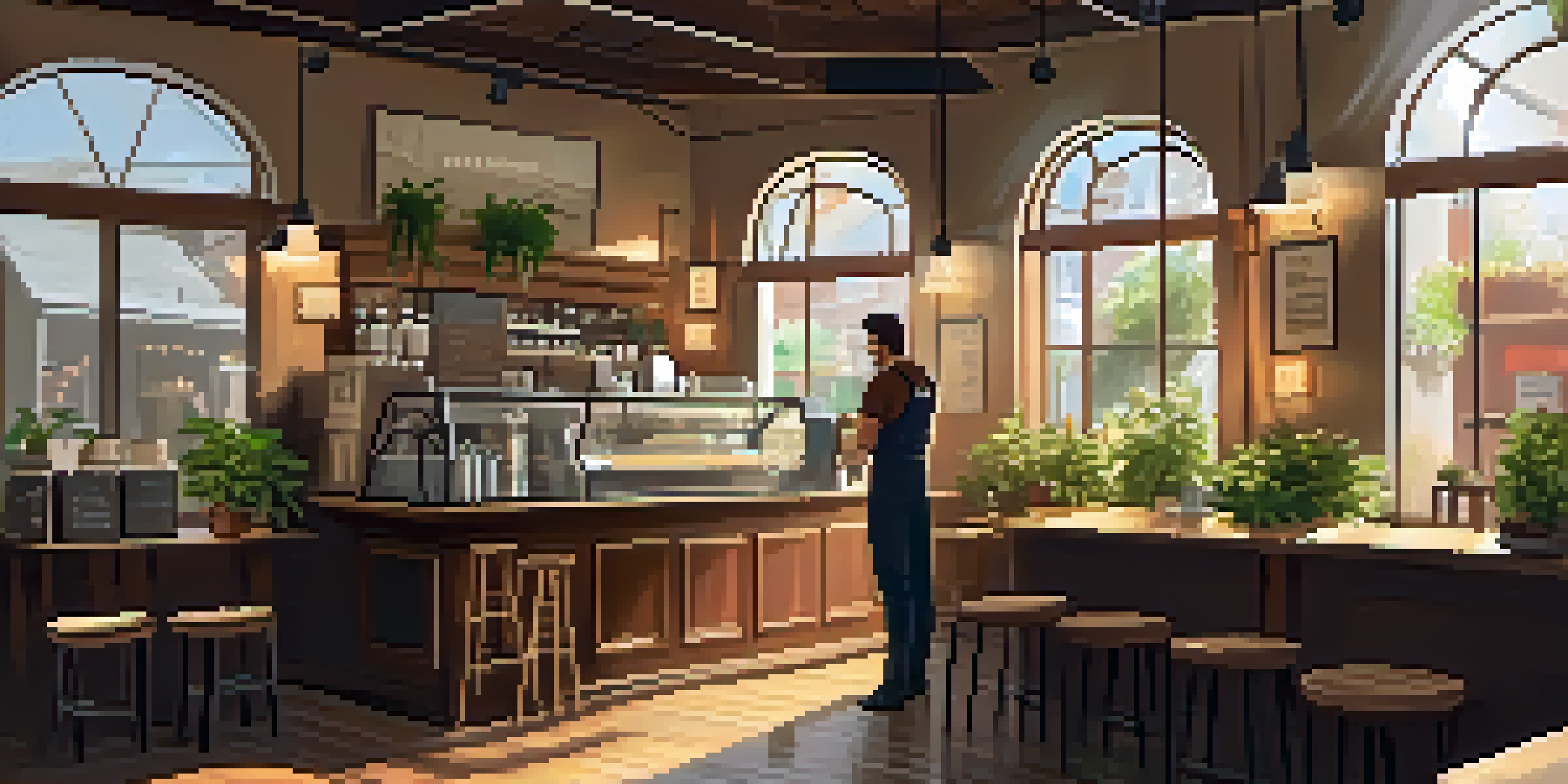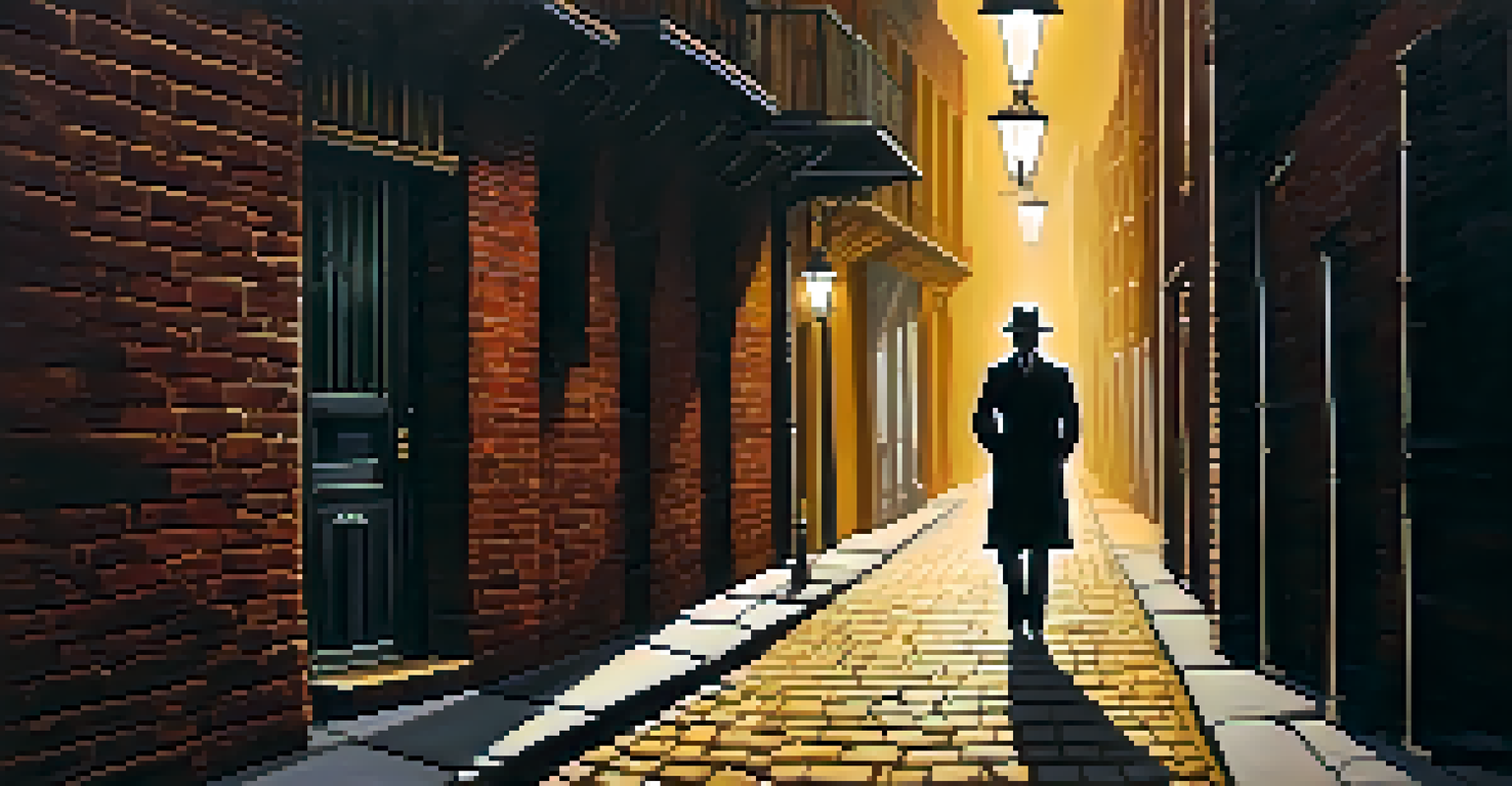Lighting Design: Creating Visual Harmony in Film

Understanding the Role of Lighting in Film
Lighting is a fundamental aspect of film production that sets the mood and tone. It’s not just about visibility; it's about creating an emotional landscape that resonates with the audience. Think of lighting as the brushstrokes an artist uses to convey feelings on canvas, shaping how viewers interpret each scene.
Lighting is not just about illumination; it’s about creating a mood that resonates with the audience.
Different lighting techniques can evoke various emotions. For instance, soft, diffused light can create a dreamy or romantic atmosphere, while harsh shadows can instill fear or tension. Understanding these nuances allows filmmakers to manipulate viewer perceptions and enhance storytelling.
Ultimately, lighting design is an essential tool in a filmmaker's arsenal, influencing not only how a scene looks but how it feels. Just like a well-composed piece of music guides the listener's emotions, effective lighting can lead the audience through the narrative journey.
The Basics of Lighting Techniques in Film
There are several key lighting techniques that filmmakers use to achieve their desired effects. The three-point lighting setup, which includes key, fill, and back lights, is foundational. This method creates depth and dimension, making characters pop against their backgrounds.

Another popular technique is high-key lighting, which uses bright light to minimize shadows, creating a cheerful and vibrant atmosphere. Conversely, low-key lighting emphasizes shadows and contrast, often used in thrillers or horror films to heighten suspense.
Lighting Shapes Emotional Tone
Effective lighting design not only enhances visibility but also creates an emotional landscape that guides audience perceptions and experiences.
Mastering these techniques allows filmmakers to craft a visual language unique to their story. Just as a chef balances flavors in a dish, lighting designers mix different types of lighting to enhance the film's narrative and emotional impact.
Color Temperature and Its Emotional Impact
Color temperature plays a crucial role in lighting design, influencing how viewers perceive scenes. Measured in Kelvin, warmer tones (like yellows and oranges) can evoke feelings of comfort and nostalgia, while cooler tones (like blues and greens) often suggest calmness or unease.
The shadows are as important as the light; they define the space and the emotion within it.
For example, a sunset scene bathed in warm hues may evoke feelings of love and tranquility, whereas a cold, blue-lit alley can create an atmosphere of danger or isolation. This emotional resonance can enhance the storytelling by aligning the visuals with the narrative's tone.
Filmmakers often carefully select color temperatures to reflect character emotions or themes. By understanding how color influences feelings, they can create a more profound connection between the audience and the story.
Creating Atmosphere Through Shadows
Shadows are just as important as light in film; they add depth and intrigue to scenes. By manipulating shadows, filmmakers can guide the viewer's focus, highlight certain elements, or create a sense of mystery. For instance, a dimly lit room with deep shadows can evoke feelings of uncertainty and suspense.
Moreover, shadows can also define characters and their relationships. A character standing in stark light with long shadows may appear menacing, while one surrounded by soft shadows might seem vulnerable. This interplay can reveal hidden layers within the narrative.
Techniques Enhance Storytelling
Mastering various lighting techniques, such as three-point lighting and color temperature, allows filmmakers to craft a visual language that deepens narrative impact.
In essence, shadows are the unsung heroes of lighting design. They work in tandem with light to create a balanced composition that enhances storytelling and emotional engagement.
The Importance of Lighting in Genre Filmmaking
Different film genres often rely on specific lighting styles to convey their unique tones and themes. For instance, horror films typically use low-key lighting to create suspense and fear, while romantic comedies often favor bright, high-key lighting to evoke warmth and happiness.
This genre-specific approach allows filmmakers to set expectations and guide audience emotions. A well-lit rom-com can instantly lift spirits, while a dark thriller can keep viewers on the edge of their seats.
Thus, understanding the relationship between lighting and genre is essential for filmmakers. It helps them craft a cohesive visual narrative that aligns with audience expectations, ultimately enhancing the overall viewing experience.
Innovative Lighting Techniques in Modern Filmmaking
With advancements in technology, filmmakers are now employing innovative lighting techniques to push creative boundaries. LED lights, for example, have revolutionized how scenes are lit, offering versatility and a range of color options that were previously unimaginable.
Additionally, techniques like practical lighting, where visible light sources within a scene contribute to the overall illumination, have gained popularity. This approach can create a more immersive and believable atmosphere, drawing viewers deeper into the story.
Collaboration Drives Success
Successful lighting design is a collaborative effort among directors, cinematographers, and gaffers, ensuring a cohesive aesthetic that aligns with the film's vision.
As filmmakers continue to experiment with new lighting technologies and methods, the possibilities for visual storytelling expand. This innovation not only enhances the aesthetic quality of films but also enriches the narrative experience.
The Collaborative Nature of Lighting Design
Lighting design is rarely a solo endeavor; it involves collaboration among various departments in film production. Directors, cinematographers, and gaffers work closely to ensure that the lighting aligns with the film's vision and emotional tone. This teamwork is essential for achieving a cohesive aesthetic.
Each team member brings unique perspectives and expertise, enriching the lighting design process. For example, a director might have a specific mood in mind, while a cinematographer focuses on technical execution. This collaborative synergy often results in a more dynamic and creative outcome.

In the end, successful lighting design is a collective effort that enhances the storytelling experience. By pooling knowledge and skills, filmmakers can create visually stunning narratives that resonate with audiences.